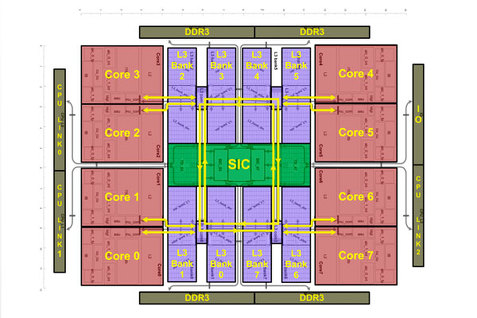An experimental batch of Elbrus-8C processors has been launched into production.

Today , an experimental batch of Elbrus-8C universal microprocessors has been launched into production, with an estimated operating frequency of 1.3 GHz. The computing power of this processor is 250 Gflops, and it is produced by technology - 28 nm. Getting ready samples of microcircuits is expected in October 2014.
The microprocessor Elbrus-8C is a fully Russian development, which is handled by CJSC MCST. Its crystal is designed using 28 nm technology, it has 8 processor cores with an improved 64-bit architecture of the 3rd generation Elbrus, a cache memory of the 2nd level with a total volume of 4 megabytes and a 3rd level of 16 megabytes.
')
On the basis of this development, it is planned to organize mass production of servers, workstations and other computer equipment intended for use in government institutions and business structures that place increased demands on information security, as well as for use in high-performance computing, signal processing, and telecommunications.
By the end of 2014, prototypes of a 4-processor server based on Elbrus-8C processors with a productivity of 1 teraflops should appear.
Distinctive features of the domestic processor from its competitors are as follows:
- the ability to perform on each core up to 25 operations per machine cycle;
- Dynamic binary translation technology to enable efficient execution of applications and operating systems distributed in binary x86 codes;
- support for secure computing with special hardware control of the integrity of the memory structure, which allows for a high level of information security using its software systems.
The base operating system for the Elbrus platform is the Elbrus OS, built on the basis of the Linux kernel. The programming system of the platform supports C, C ++, Java, Fortran-77, Fortran-90 languages.
Source: https://habr.com/ru/post/227587/
All Articles